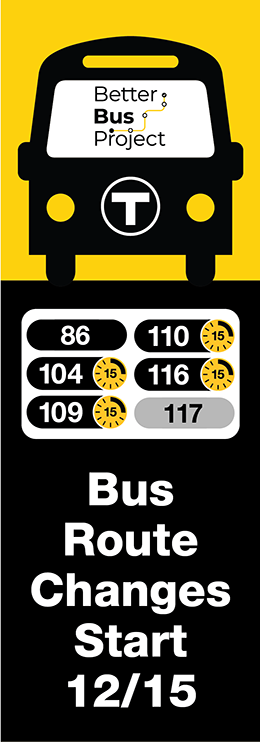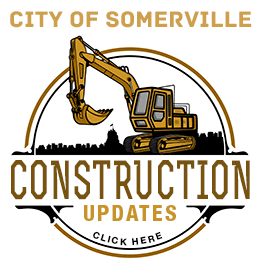By Kimberly Geronimo

One winter day a few years ago, Somerville resident Kellyann Binari rode her motorized wheelchair out to go food shopping for her family after a snow storm. But as she rode over what seemed to be even ground, she suddenly found herself sunk deep into a snow-covered dip in the sidewalk, her motorized wheels uselessly spinning. A very cold twenty minutes later, with the help of five men Binari was finally set free.
That was not the first nor the last time Binari would have a serious problem leaving her home after a snow storm, she said. People with disabilities, who include the blind, some elderly, people with walkers or canes, and people in wheelchairs such as Binari, must take on a host of challenges during and after snow storms others may not even imagine.
And with the recent storms those challenges can pile up as fast as the snow.
 Binari, a member of the Somerville Commission for Persons with Disabilities, is involved in the commission’s efforts to direct the city’s attention towards the effects of snow storms and snow removal policies on people with disabilities.
Binari, a member of the Somerville Commission for Persons with Disabilities, is involved in the commission’s efforts to direct the city’s attention towards the effects of snow storms and snow removal policies on people with disabilities.
Responsibility for snow removal in Somerville is a “very gray area and needs to be more concrete,” Binari said.
The city’s snow ordinances contain no specific language regarding curb cuts, the area where the sidewalk slopes down to meet a street or driveway, even though large piles of snow, slush, or huge puddles of melted snow water in curb cuts can make it near impossible for the disabled to pass, she said.
“Whose responsible for clearing the curb cuts at the cross walk?” she asked.
The plowed snow that piles up on the side of the road in front of bus is another challenge for wheelchair users. ‚ÄúWho’s responsible for bus stops so bus drivers can drop off and pick up the disabled person?‚Äù she asked. ‚ÄúIt’s not up to the drivers to shovel out what’s already there,‚Äù she said, but many people with disabilities, such as the elderly, ‚Äúcan’t lift their legs up that high to get over the snow banks.‚Äù
Binari is also concerned about specific regulations of snow removal. The city’s snow ordinances say sidewalks must be shoveled and passable, but they don’t specify the width, she said. Walkers and wheelchairs require a larger width of cleared sidewalk to pass than a regular footpath.

Binari said she hoped that the ordinances would be revised to include a specific required width for cleared paths that would be walker- and wheelchair-friendly. She suggested that the city could invest in something like bobcats with plows that could fit down sidewalks and clear a wider path than hand shovels.
She also favors a snow removal enforcement policy used in some western cities. The policy requires private and business owners to clear the sidewalks in front of their property. If they do not comply, the city will clear the snow from the sidewalk and then charge the owner, she said. ‚ÄúWe need to make it clear, if it’s your sidewalk, it’s your responsibility,‚Äù she said.
According to city spokeswoman Leslie Hawkins, the city does hold property owners responsible for clearing the sidewalks in front of their property. The city waits ‚Äú24 hours before the inspectional services department starts fining you if you don’t make it good for pedestrians,‚Äù she said.
Regarding bus stops, Hawkins said at Cemusa bus stops (covered bus stops), snow removal is a Cemusa responsibility, as specified in the contract between Cemusa and the MBTA. At the other bus stops, the legal responsibility for snow removal is hot potatoed between the MBTA and the city, but as of the last couple of snow storms this season, the city has decided to take practical responsibility for the snow removal, she said.
The city has a very specific and chronological approach to snow removal, according to Hawkins. Clearing the streets is the city’s top priority, followed by snow removal of city-owned walk ways, and then snow removal at intersections. ‚ÄúSnow removal takes time,‚Äù she said.
She emphasized that the city works hard to clear the snow after a storm, but that it is not an easy task. ‚ÄúThe inherent nature of a snow storm is that we’re constantly playing catch-up,‚Äù she said.
 Hawkins said she was “not aware of any specific language written in the code” regarding disabilities, referring to the inspectional services code.
Hawkins said she was “not aware of any specific language written in the code” regarding disabilities, referring to the inspectional services code.
It is precisely this lack of specific language that worries Binari and the disabilities commission. In a sense, no specific language regarding people with disabilities in the code translates into no acknowledgement of the specific challenges facing the disabled during snow storms, she said.
‚ÄúThings are not thought about as ‘oh, we need to get the disabled out there too,‚Äù she said. ‚ÄúEven though there are fewer people with disabilities than able-bodied people, that doesn’t mean we shouldn’t be thought of.‚Äù

 https://www.portersquarebooks.com/
https://www.portersquarebooks.com/













Reader Comments